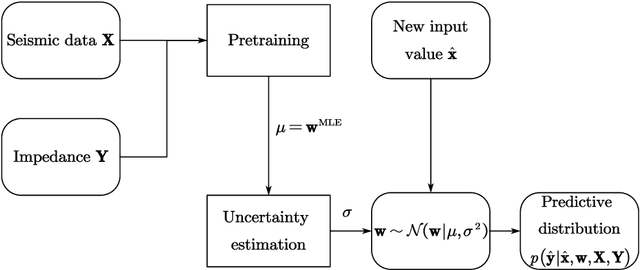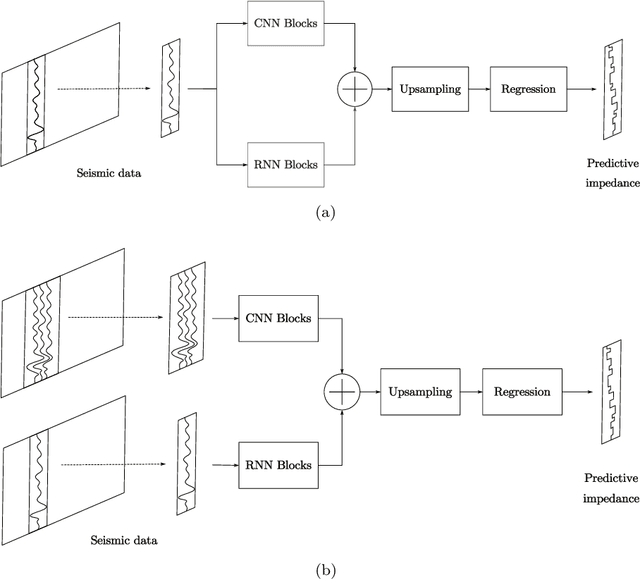Semi-supervised Impedance Inversion by Bayesian Neural Network Based on 2-d CNN Pre-training
Paper and Code
Nov 20, 2021



Seismic impedance inversion can be performed with a semi-supervised learning algorithm, which only needs a few logs as labels and is less likely to get overfitted. However, classical semi-supervised learning algorithm usually leads to artifacts on the predicted impedance image. In this artical, we improve the semi-supervised learning from two aspects. First, by replacing 1-d convolutional neural network (CNN) layers in deep learning structure with 2-d CNN layers and 2-d maxpooling layers, the prediction accuracy is improved. Second, prediction uncertainty can also be estimated by embedding the network into a Bayesian inference framework. Local reparameterization trick is used during forward propagation of the network to reduce sampling cost. Tests with Marmousi2 model and SEAM model validate the feasibility of the proposed strategy.
 Add to Chrome
Add to Chrome Add to Firefox
Add to Firefox Add to Edge
Add to Edge